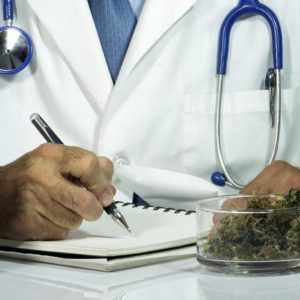 A new study finds an increase in accident insurance claims in three states that have approved the sale of marijuana for recreational use. According the Highway Safety Institute, the number of vehicle collisions reported to insurance companies in in States that have legal marijuana is 3 percent higher than what would have been expected if those states had not made it legal to buy pot. We see strong evidence of an increased crash risk in states that have approved recreational marijuana sales. While research finds a greater crash risk, his study does not say if the increase in collisions in the three states were directly caused by drivers who were high. The study also did not look at highway fatality rates in the states that legalized marijuana.
A new study finds an increase in accident insurance claims in three states that have approved the sale of marijuana for recreational use. According the Highway Safety Institute, the number of vehicle collisions reported to insurance companies in in States that have legal marijuana is 3 percent higher than what would have been expected if those states had not made it legal to buy pot. We see strong evidence of an increased crash risk in states that have approved recreational marijuana sales. While research finds a greater crash risk, his study does not say if the increase in collisions in the three states were directly caused by drivers who were high. The study also did not look at highway fatality rates in the states that legalized marijuana.
 To determine whether collision rates are higher now in state that issue marijuana cards in Florida and other States than their would be if recreational pot use was still illegal, the institute compared the collision claim rates before and after legalization with the collision claim rates of comparable states where pot is still illegal. The study comes as more states are considering legislation to approve pot sales. Opponents say legalization will lead to a number of problems including the increased likelihood of people driving under the influence.
To determine whether collision rates are higher now in state that issue marijuana cards in Florida and other States than their would be if recreational pot use was still illegal, the institute compared the collision claim rates before and after legalization with the collision claim rates of comparable states where pot is still illegal. The study comes as more states are considering legislation to approve pot sales. Opponents say legalization will lead to a number of problems including the increased likelihood of people driving under the influence. Since Florida first approved cannabis, Marijuana Doctors in Tampa Florida that question of whether high drivers are getting into more accidents has been suggested, but never definitively proven, partially because there is not a field sobriety test to check drivers specifically for marijuana. Another reason it’s hard to determine exactly how many accidents are caused by stoned drivers is that drivers testing positive for having THC often have alcohol in their system as well.
Since Florida first approved cannabis, Marijuana Doctors in Tampa Florida that question of whether high drivers are getting into more accidents has been suggested, but never definitively proven, partially because there is not a field sobriety test to check drivers specifically for marijuana. Another reason it’s hard to determine exactly how many accidents are caused by stoned drivers is that drivers testing positive for having THC often have alcohol in their system as well.
One of the richest cash crops is making a hugh impact in Florida Marijuana. It’s legal for adults over the age of 21 to smoke marijuana without a doctor’s letter in nine states. Medical marijuana is legal in 29 states. Florida became the first state to legalize marijuana through the legislature, rather than a ballot initiative when the Governor signed the bill into law in January. Marijuana prohibition began 80 years ago when the federal government put a ban on the sale, cultivation, and use of the cannabis plant. It remains illegal on the federal level. Despite the efforts of Attorney General Jeff Sessions, who has been on a crusade to stamp out legal marijuana since his appointment, the industry is exploding. Legal marijuana sales were expected to hit billions in North America in 2017, according to a report which has not yet released final numbers for the year, but its forecast represents a increase over , shattering previous expectations about how quickly the industry could grow in the face of federal prohibition. The report also predicted that the entire legal marijuana market will reach many billions in sales which is close to a 30% annual growth rate expected by 2022, as more state-legal markets come online. Legal marijuana sales are predicted to go bonkers in may Florida cities such as West Palm Beach, Miami, Fort Lauderdale and many more. That represents an unprecedented increase, shattering previous expectations about how quickly the cannabis industry could grow in the face of federal prohibition. The report further predicts the entire legal cannabis market to reach billions in sales – a annual growth rate – as more states legalize marijuana for recreational use and existing markets mature. The industry’s growth is buoyed by a number of new state-legal markets coming online in 2017, where legal medicinal marijuana sales began in July, raked in many millions during the first month of sales, according to the report. The report notes that the projection hinges on the assumption that the federal government does not crack down on state-legal cannabis, nor does it assume that there will be a host of new states legalizing marijuana in the next few years. Attorney General Jeff Sessions is a noted opponent of marijuana legalization, though the Justice Department has not yet indicated that it would seek to prosecute state-legal marijuana businesses. Recreational marijuana is legal in seven states, and some form of medicinal marijuana is legal in thirty states. Marijuana is still considered an illegal Schedule 1 drug by the federal government, however.
States around the country have legalized medical marijuana. The American public largely supports the legalization of medical marijuana. At large percentage of the public believes the drug should be legal for medical uses, and recreational pot usage is less controversial than ever, with at least 60 plus percent of Americans in support. Even though some medical benefits of smoking pot may be overstated by doctors in florida and advocates of marijuana legalization, recent research has demonstrated that there are legitimate medical uses for marijuana and strong reasons to continue studying the drug’s medicinal uses.
Even the NIH’s National Institute on Drug Abuse lists medical uses for cannabis. There are at least two active chemicals in marijuana that researchers think have medicinal applications. Those are cannabidiol (CBD) which seems to impact the brain without a high— and tetrahydrocannabinol (THC) which has pain relieving properties and is largely responsible for the high. But scientists say that limitations on marijuana research mean we still have big questions about its medicinal properties. In addition to CBD and THC, there are another 400 or so chemical compounds, more than 60 of which are cannabinoids. Many of these could have medical uses. But without more research, we won’t know how to best make use of those compounds. More research would also shed light on the risks of marijuana. Even if there are legitimate uses for medicinal marijuana, that doesn’t mean all use is harmless. Some research indicates that chronic, heavy users may have impaired memory, learning, and processing speed, especially if they started regularly using marijuana before age 16 or 17.
That same report said there’s equally strong evidence provide by Doctors in Fort Lauderdale Florida said marijuana can help with muscle spasms related to multiple sclerosis. Other types of muscle spasms respond to marijuana as well. People use medical marijuana to treat diaphragm spasms that are not treatable by other, prescribed medications. There’s a fair amount of evidence that marijuana does no harm to the lungs, unless you also smoke tobacco. One study published in Journal of the American Medical Association found that not only does marijuana not impair lung function, it may even increase lung capacity. Researchers looking for risk factors of heart disease tested the lung function of 5,115 young adults over the course of 20 years. Tobacco smokers lost lung function over time, but pot users actually showed an increase in lung capacity. It’s possible that the increased lung capacity may be due to taking a deep breaths while inhaling the drug and not from a therapeutic chemical in the drug.

During the research for his documentary “Weed,” Sanjay Gupta interviewed the Figi family, who treated their 5-year-old daughter using a medical marijuana strain high in cannabidiol and low in THC. The Figi family’s daughter, Charlotte, has Dravet Syndrome, which causes seizures and severe developmental delays. According to the film, the drug decreased her seizures from 300 a week to just one every seven days. Forty other children in the state were using the same strain of marijuana to treat their seizures when the film was made and it seemed to be working. The doctors who recommended this treatment said the cannabidiol in the plant interacts with brain cells to quiet the excessive activity in the brain that causes these seizures. Gupta notes, however, that a Florida medical marijuana hospital that specializes in the disorder, the American Academy of Pediatrics, and the Drug Enforcement agency don’t endorse marijuana as a treatment for Dravet or other seizure disorders. CBD may help prevent cancer from spreading, researchers in California said in mid 2000’s. Other very preliminary studies on aggressive brain tumors in mice or cell cultures have shown that THC and CBD can slow or shrink tumors at the right dose, which is a strong reason to do more research. One 2014 study found that marijuana can significantly slow the growth of the type of brain tumor associated with 80% of malignant brain cancer in people. Still, these findings in cell cultures and animals don’t necessarily mean the effect will translate to people — far more investigation is needed. Researchers know that many cannabis users consume marijuana to relax, but also that many people say smoking too much can cause anxiety. So scientists conducted a study to find the “hybrid” zone: the right amount of marijuana to calm people.


